A Guide to Plastic Straw Alternatives (+ Encouraging Venues to go Straw Free)
When it comes to reducing our personal plastic use, and also tackling plastic pollution, it’s not a case of targeting everything at once. For most people that’s overwhelming and a recipe for giving up.
A more realistic approach is choosing one thing to focus on, or maybe a couple of things, and work towards making these changes before embarking on the next thing.
Rethinking single-use plastic items (and particularly plastic packaging) is a great place to start. These kinds of items always feature in the top 10 items found in beach clean-ups and litter pick-ups. They create a litter problem because they are lightweight and easily escape into the environment.
They are also items that are easy to avoid or replace. There are usually multiple solutions.
One of the top 10 items found in litter pick-ups and beach clean-ups is plastic straws. When we are trying to reduce our plastic footprint – and encourage others to do so – tackling plastic straws is an easy first step.
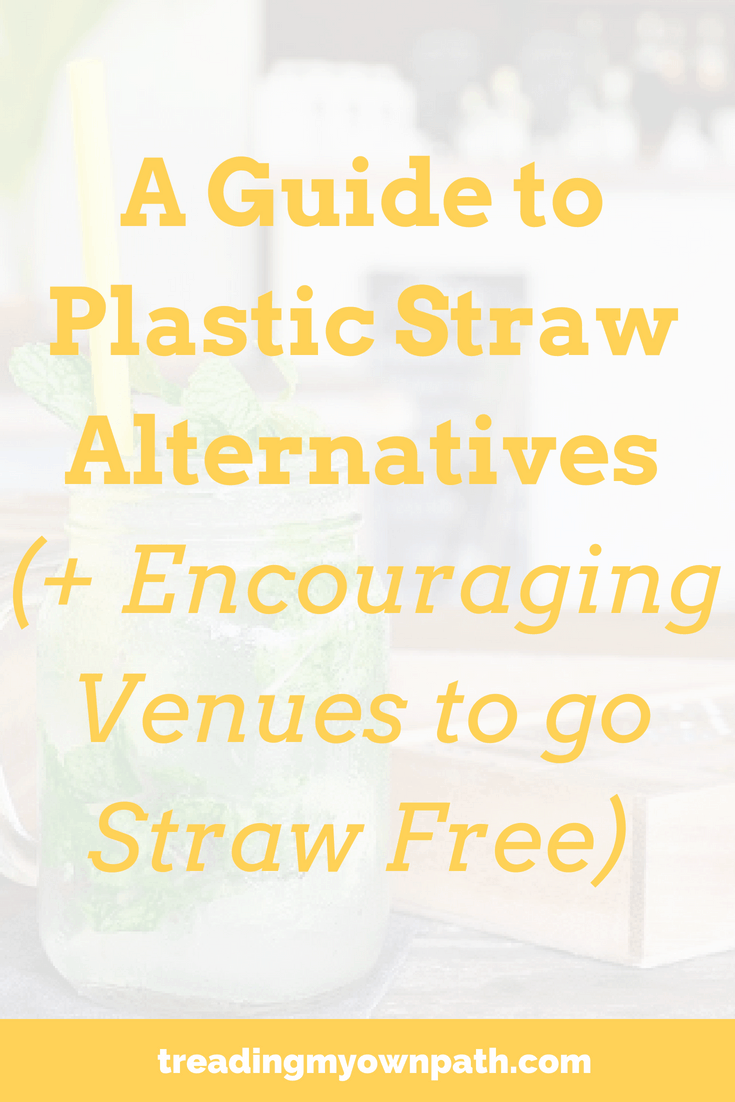
Plastic Straws are Not Recycled
One plastic straw might seem small, but it’s the quantity that is used that causes the issue. It is estimated that Americans use 500 million plastic straws daily.
Typically plastic straws are made from polypropylene (PP, plastic #5) or less commonly, polystyrene (PS, plastic #6). Polystyrene isn’t always the white, fluffy looking stuff – that’s actually expanded polystyrene. Straws use the non-expanded type, which is also used for coat hangers and bread tags, is coloured (or black) and looks nothing like the white version.
Plastic straws aren’t easily recycled. Partly this is because they are made from a plastic that isn’t commonly recycled. They are also too small and light to be separated successfully with machinery at the Material Recovery Facilities.
Even when polypropylene and polystyrene is recycled, it’s generally mixed with virgin (new) plastic to maintain the quality, so it’s not a closed loop.
Plastic Straws Can Be Refused
The great thing about plastic straws is that they can be refused. It’s literally as simple as ordering a drink and saying “no straw, please”.
Reusable Straw Options Exist
Reusable straw options exist, in glass (toughened glass that is similar to that used in Pyrex), metal (usually stainless steel) and bamboo. Different lengths and widths are available; which one is best is personal choice.
Personally I like the feeling of glass over stainless steel, but I do carry a stainless steel straw in my reusable cutlery set as it fits.
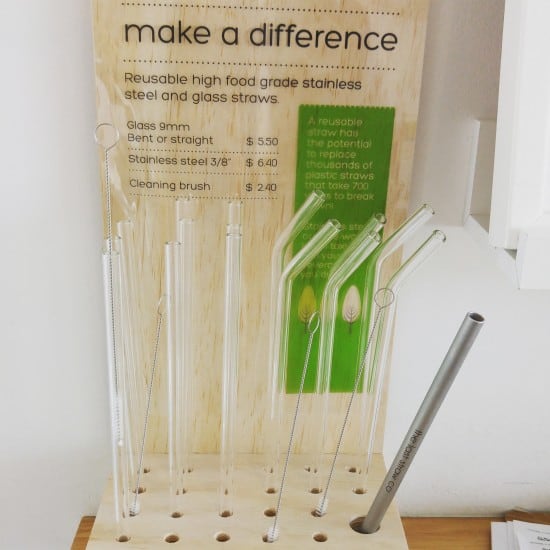
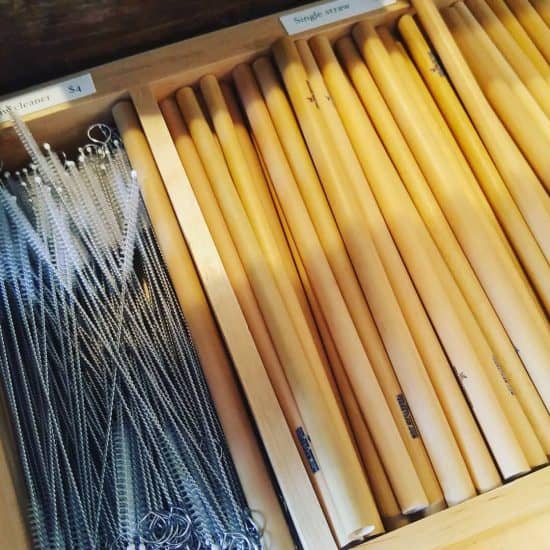
Cleaning brushes are just as readily available to remove debris.
(If you’d like to invest in a reusable straw, you might find my worldwide list of independent ethical online stores useful.)
Increasingly, venues are providing reusable straws for their customers rather than single-use disposables. These tend to be glass or stainless steel which can be sterilized. As with all kitchenware, these will be cleaned thoroughly and sanitized between customers.
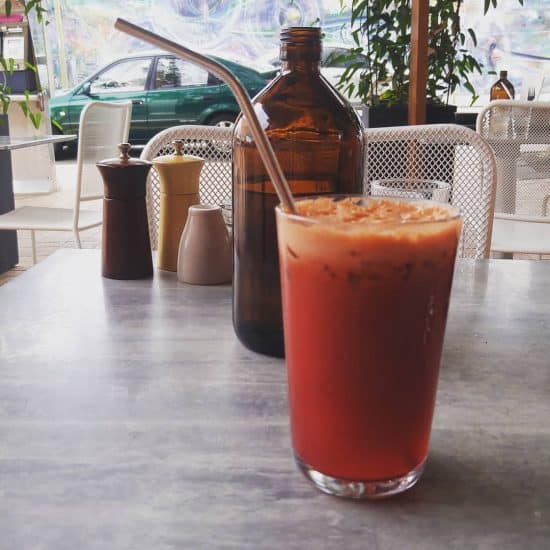
Venues Can Provide Single-Use (Plastic-Free) Straws
Banning plastic straws is not the same as banning straws altogether. Banning plastic straws does not mean discriminating against people who need to use straws because they are elderly, frail or have mobility issues.
Banning plastic straws doesn’t mean that those few drinks that really work better with a straw (frozen drinks or fresh drinking coconuts) are off the menu.
Single-use alternatives that are plastic-free include FSC-certified paper straws, bamboo straws and straws that are literally made from straw. (Straw – that’s what straws were made from until plastic took over. Hence the name!)
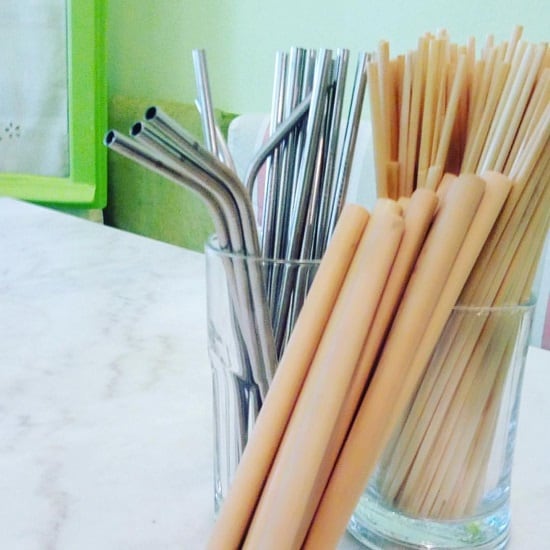
Some venues provide multiple options: this cafe in Paros, Greece offers both bamboo and stainless steel reusables for its customers, as well as single-use straw straws.
Single-Use Straws by Request Only
Many venues are beginning to recognize the waste and litter created by straws, replace their plastic straws with non-plastic alternatives, and/or offer straws by request only. Venues deal with hundreds or thousands of customers every day, so one venue deciding to go straw free can have a real impact.
As individuals, we can change our own personal habits, but we can also try to encourage our local cafes, restaurants and food vendors to join the movement. Consider approaching your favourites and asking if they’d consider removing plastic-straws.
There are a number of groups working to encourage more businesses to get on board. Three that map out participating vendors are:
The Last Plastic Straw (USA)
The Last Straw (Australia)
Straw Wars (UK)
Tackling Plastic Straws is a Conversation Starter to the Wider Issues of Plastic
The thing I love about the plastic straw problem is that solving it really requires very little effort on our part. It doesn’t require changing habits or even remembering to bring reusables. It starts with saying “no thanks”.
But at the same time, it’s a powerful way to begin the conversation with people who might not know about the plastic pollution issue, or who haven’t given much thought to the burden of single-use plastic.
Every time we say “no thanks”, we have an opportunity to talk about why. We can talk about why we are avoiding single-use plastics – whether it’s to use less resources, to reduce litter, to protect the oceans, for health reasons, or because we simply love a challenge. We can talk about the alternatives to single-use plastics. We can share success stories and examples.
We have the power to change our own habits, and we have the power to influence others. We can influence by leading by example, and we can influence by beginning conversations. That’s how we spread ideas; that’s how ideas become movements; and that’s how we bring about change.
Plastic straws are just the beginning. That is exactly where we need to start.
Now I’d love to hear from you! Do you use a reusable straw, or simply go without? If you prefer reusables, do you have a favourite type? Are there any cafes near you that offer straws only on request, or offer reusables for customers? Have you noticed the awareness rising over the last few months? Please share your thoughts below!
[leadpages_leadbox leadbox_id=140b48fc6639c5] [/leadpages_leadbox]


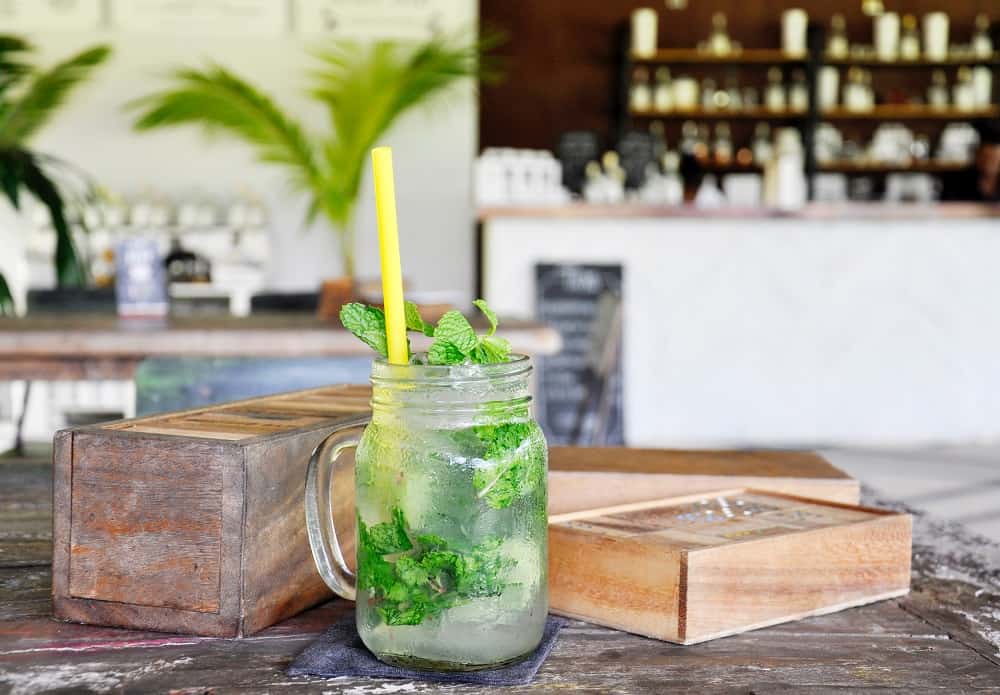




We have been using stainless steel straws for around 6-7 years now. They’re (obviously) still going strong! Our favourite local takeaway, that is on the waterfront, only offers paper straws/wooden cutlery etc. And our favourite whole foods cafe, Satori, trialed going straw-free, but have moved to using paper straws (obviously had complaints) They do offer stainless and bamboo straws for sale though
That’s great Jacqui – and you still have the originals? Made to last of course – but I’ve known a couple of people accidentally leave them in glasses in cafes! Still, that’s the kind of thing you only let happen once, then you learn ;)
I do wonder if straws will eventually get phased out as a “for mass use” idea. The idea of no straw is still such a crazy one for many people, but as more places switch to “straws on request” or paper versions, I think we will see more and more people and places turn their backs on them. I hope so!
Stainless steel straw in my bag and glass ones at home. The latter are made by German startup Halm — recommended for anyone in Europe looking for locally-made options. https://www.halm.co/en/
Same as me, Anna! Thanks for the tip for the EU option too. Always good when people can choose local options!
My grandson, 6yr old Calvin, opened my eyes to the plastics problem when we were out for lunch and he removed the straw and plastic cover from his drink and educated me on the plastics in the ocean and in fish! His Mother uses silicone straws which she carries in her backpack, we are in Canada and she ordered them from Walmart, she has ordered 6 for me. I have stopped putting my veggies and fruit in plastic bags and I’ve used reusable shopping bags for years. None of the restaurants we go to have a reusable straw option, but I am starting to say, “No straw, thank you” and whip out my reusable straws! One step at a time, I always think of Calvin and his future when I don’t use plastics.
That is both awesome and adorable Sheila! I can just imagine it! Great that you’ve been able to take some steps too. Calvin must be pleased! Funny thing about plastic, we don’t notice it and then suddenly we can’t NOT notice it! Luckily there are so many solutions and options and alternatives out there :)
I recently started carrying a stainless steel straw with me and I have glass straws at home. The glass straws make even the most boring drinks feel fancy! My biggest problem is that I often forget to request “no straw” when I go out, even if I have my reusable with me. I never use the straws left on the table if they’re wrapped in paper, but I’m afraid they all still get tossed in the trash when clearing the tables. But I’m getting better at remembering!
The two biggest habits to develop when it comes to straws Tiffany, is remembering to say no straw, and then remembering to take your reusable back out of the empty glass and keep it with you! But all habits get easier with practice!
No matter what it is, things always feel so much nicer (fancier!) out of glass, I think!
fyi – McDonald’s announced this week it’ll test non-plastic straws in 1,000 stores worldwide. This may be a marketing hand wave but it’s something! Let’s hope other high-profile chains do they same. Keep asking!!
Do you know of a cleaning brush for straws that doesn’t have a nylon (I.e., plastic) tip?
On Koh Lanta, in Thailand, quite a few businesses have stopped using plastic straws and use bamboo, stainless steel or paper straws instead. We have a great organization here called Trash Hero that has been trying to raise awareness and change habits and it’s slowly working. There is a huge plastic pollution problem in Thailand and a lot still needs doing, but Koh Lanta is starting to move in the right direction. We love your website by the way :)
Be careful with straws made from straw. Straw is usually made from oats which are typically sprayed with glyphosate (weed killer) right before harvest. Organic straw is the solution but is hard to find.
Plastic straws will always be necessary for some of our elderly population, children and adults with disabilities. As will plastic wrapped pre cut vegies etc. But if everybody who aren’t in these situations, choose to refuse, then the pollution from the other users would be minimal.
Plus I really to pull my socks up with remembering to ask for no straw.
Hi Lindsay, I started Final Straw Cornwall in November 2017 after watching the film A Plastic Ocean and being shocked by the footage I saw and inspired to do something about it. We now have over 500 businesses signed up and our aim is to make Cornwall plastic straw free and encourage other counties to follow. Your blog follows exactly the lines we work on about it being the easy first step to raising awareness for the general public. Website is http://www.finalstrawcornwall.co.uk and we have fb and twitter accounts.
I note you do not mention a UK organisation dealing with this – we have many offshoot groups eg FinalStraw Solent Final Straw Exeter and we want to share our knowledge with as many people as possible! Love your blog by the way!
Pat Smith
Dear Lindsay
I have shared your blog on my FB page sadly it came with a person shaped space rather than a picture??
Also as an older generation person I find it interesting what I have taken up and not bothered about like straws. I got a metal one but do not use it as I remain happy to drink from glasses or bottles.And thinking about it so are your generation for example when having a beer !
I have been using a salt block for deodorant for years more out a concern for the toxins in cosmetics and animal testing rather than the environment!
Denise
Great article. We really need to stop using plastic straws! Everyone needs to pitch in, and say no to plastic. You can buy reusable, biodegradable straws here: https://goo.gl/hGnBpB. I used them every chance I get.
I joined the PFJ movement a few years ago. Recently I’ve been concerned about micro plastics entering our water through washing machines… via: washing anything made with petroleum>micro fibers of plastic wash out of clothing>those fibers do not get caught in any water recycling filters>microfibers are ingested by all species through intake of water. What’s your take on this?
You are all idiots. Plenty of fish in the ocean quit believing what you read and worry about all the humans shitting under bridges in california…. wake the hell up dumbass!
Not to mention. How are the staws ending up in the ocean? People do not throw them away?
Let me educate you people.
Littering, put a stop to it…..worry about that..
Also illegal immigrants come from 3rd world countries.. They have no clue what a trash can is and that is a fact. Look at their countries.
START WITH THAT!
what methodology did you use to write this wonderful article?
Stainless steel straw in my bag and glass ones at home.